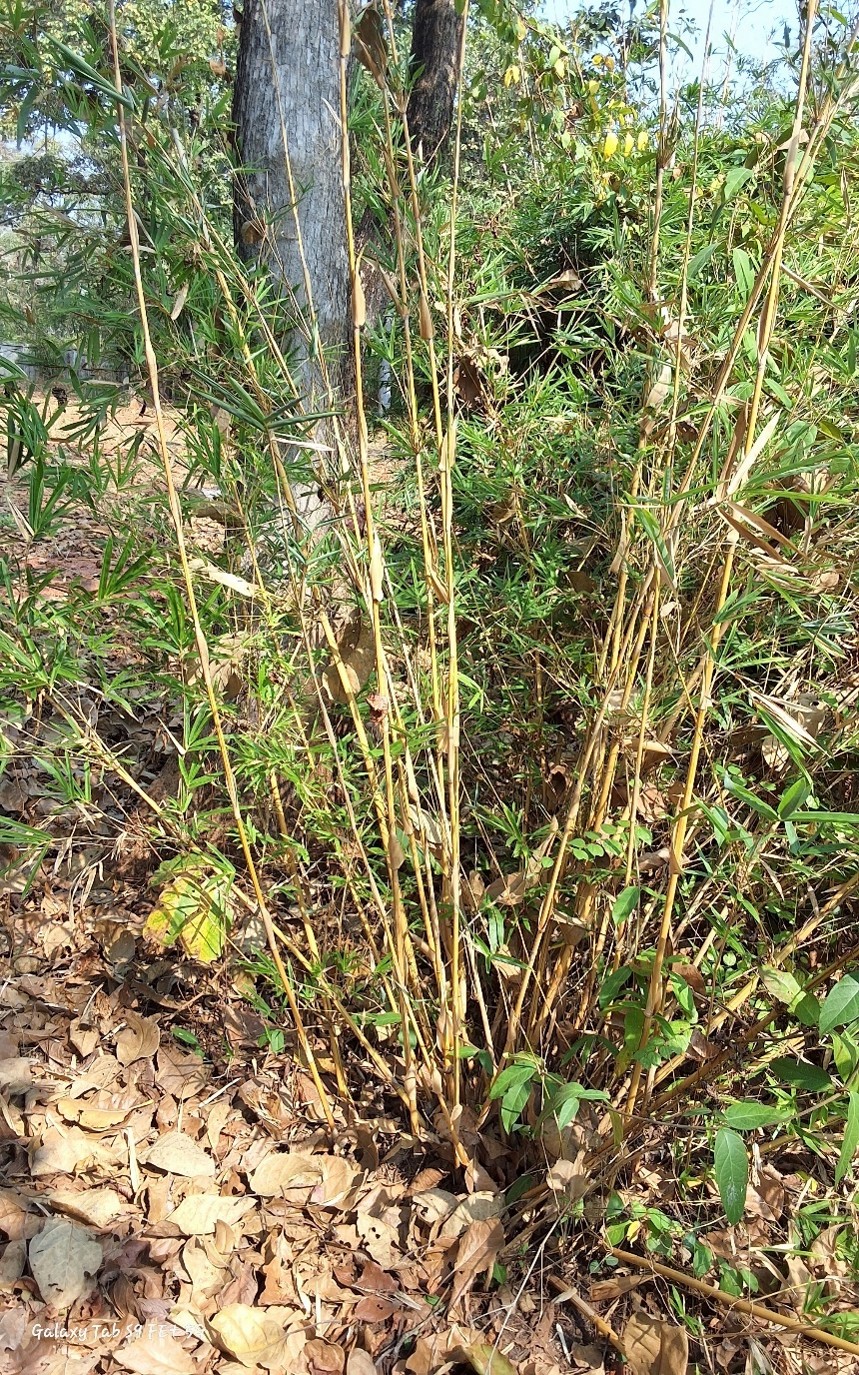Bambusa multiplex 'Alphonse Karr',

Bambusa multiplex 'Alphonse Karr',
commonly known as Alphonse Karr Bamboo or Golden-striped Bamboo, is a striking ornamental bamboo variety native to Southeast Asia, particularly China and India. It has been widely cultivated worldwide for its decorative appeal in gardens, hedges, and landscaping. This variety thrives at elevations up to 1200 meters and prefers fertile, well-drained loamy soils but can adapt to various soil types.
The culms of Bambusa multiplex 'Alphonse Karr' are clumping, dense, and compact, reaching heights of 2 to 4 meters with a diameter of 1.5 to 3.5 cm. The culms are green with distinctive yellow stripes, creating a golden appearance that adds to its ornamental value. The internode length ranges from 20 to 40 cm. The culm sheaths are green when young, turning yellowish with age, and are deciduous. The adaxial surface of the sheath is smooth, while the abaxial surface is covered with fine, soft hairs. The margins are ciliate with soft bristles.
The leaves are narrow lanceolate, measuring 8 to 15 cm in length and 1.5 to 2.5 cm in breadth, with pointed tips.
The inflorescence consists of small panicles with short, branched spikelets around 1 to 2 cm in length. The empty glumes are ovate, acute, and faintly nerved, while the flowering glumes are narrow, with ciliate edges and slightly hairy margins. The stamens are exserted with glabrous anthers, and the style is hairy. Flowering is rare and typically occurs in gregarious cycles every 30 to 50 years. Flowering has been rarely reported and is generally observed in ornamental gardens and plantations. The seed type consists of few seeds with low viability or germination potential.
Bambusa multiplex 'Alphonse Karr' is propagated through offsets and clump division, culm cuttings, and tissue culture techniques.
This bamboo is primarily used for ornamental purposes, such as creating hedges, screens, and decorative gardens. It is also ideal for bonsai and container gardening, making it perfect for privacy barriers, fencing, and windbreaks. Additionally, it is used in craftwork, small furniture, and soil stabilization in ornamental gardens.
Listen Audio:
Need assistance? BRTC Faculty